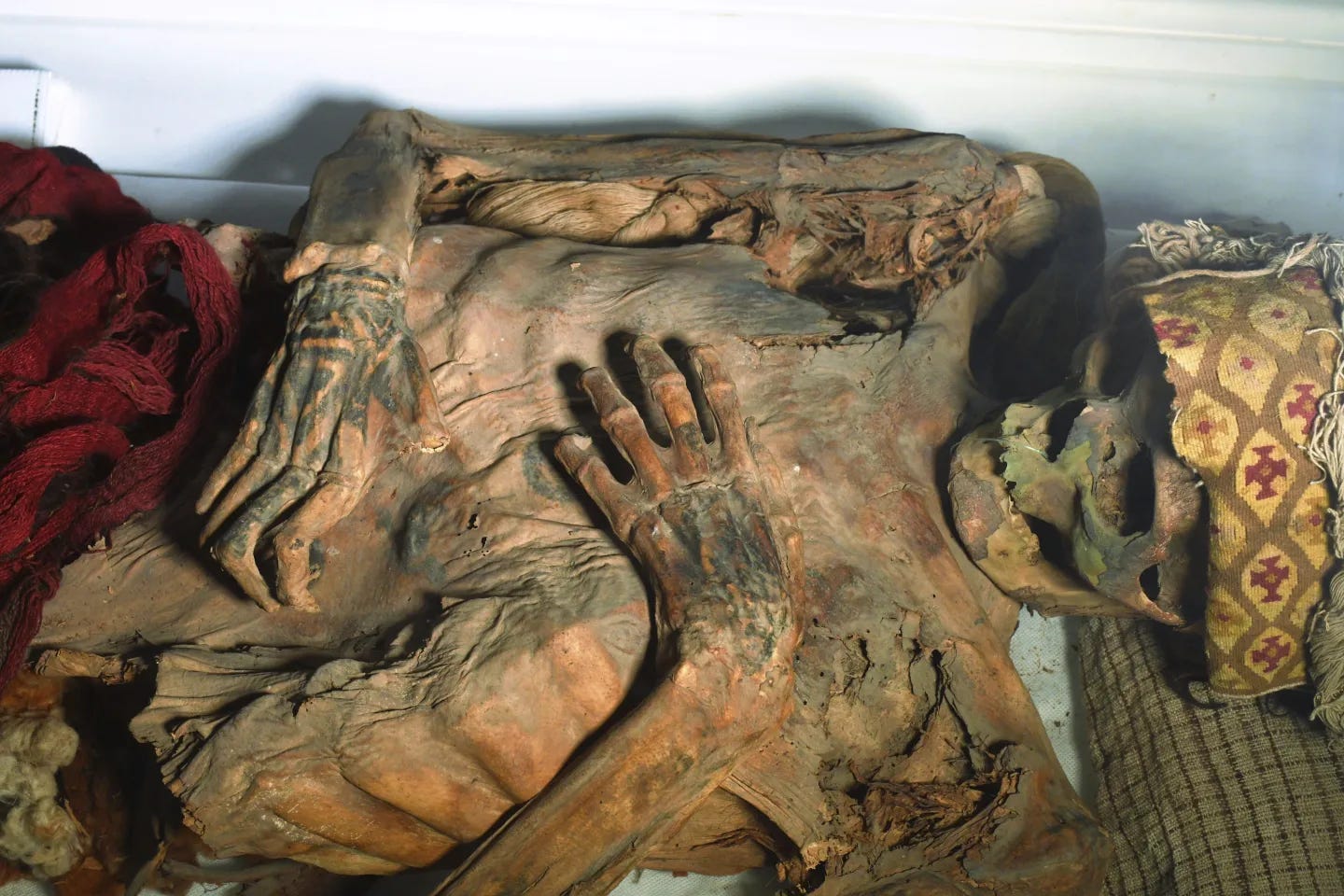Lasers Reveal Hidden Details of Ancient Tattoos on Peruvian Mummies
WASHINGTON (AP) — For over 5,000 years, humans have decorated their bodies with tattoos. Now, a groundbreaking study has used laser technology to uncover intricate tattoo designs on ancient mummies fr
Researchers found that the preserved skin and dark ink created a striking contrast, allowing them to see the fine details of tattoos dating back to around 1250 A.D., according to study co-author Michael Pittman, an archaeologist at the Chinese University of Hong Kong.
The team analyzed approximately 100 mummies from the Chancay culture, a pre-Incan civilization that thrived along Peru’s coast before the arrival of Europeans. Every individual examined bore tattoos on various body parts, including hands, knuckles, and forearms. The study focused on four individuals with particularly intricate tattoos featuring geometric patterns such as triangles and diamonds, Pittman explained.
Although the exact technique used to create these tattoos remains unknown, their precision and quality rival modern electric tattooing, said Aaron Deter-Wolf, an archaeologist at the Tennessee Division of Archaeology who specializes in pre-Columbian tattoos but was not involved in the study.
Published in the journal Proceedings of the National Academy of Sciences, the study employed laser technology that makes skin faintly glow. "We basically turn skin into a light bulb," said co-author Tom Kaye of the Foundation for Scientific Advancement in Arizona, describing how the technique illuminated previously hidden details.
Deter-Wolf noted that the findings highlight the potential of non-destructive technologies for studying fragile archaeological artifacts like mummies.
Tattooing has been practiced for millennia across different cultures. The oldest known tattoos were found on a Neolithic man who lived in the Italian Alps around 3,000 B.C. Tattoos have also been documented on mummies from ancient Egypt and other civilizations worldwide.
Throughout history, tattoos have served various purposes—marking cultural identity, social status, life events, or even offering spiritual protection, said Lars Krutak, an archaeologist at the Museum of International Folk Art in Santa Fe, New Mexico, who was not part of the study.
While researchers typically examine ancient art on pottery, textiles, and stone carvings, Bournemouth University archaeologist Martin Smith emphasized that studying preserved tattoos provides a rare glimpse into lost artistic traditions. "When ancient tattoos are available to us, they give exciting insights into forms of figurative and abstract art that we wouldn’t otherwise be able to access," he said.
The Associated Press Health and Science Department receives funding from the Howard Hughes Medical Institute’s Science and Educational Media Group, as well as the Robert Wood Johnson Foundation. However, all editorial content is produced independently by the AP.


